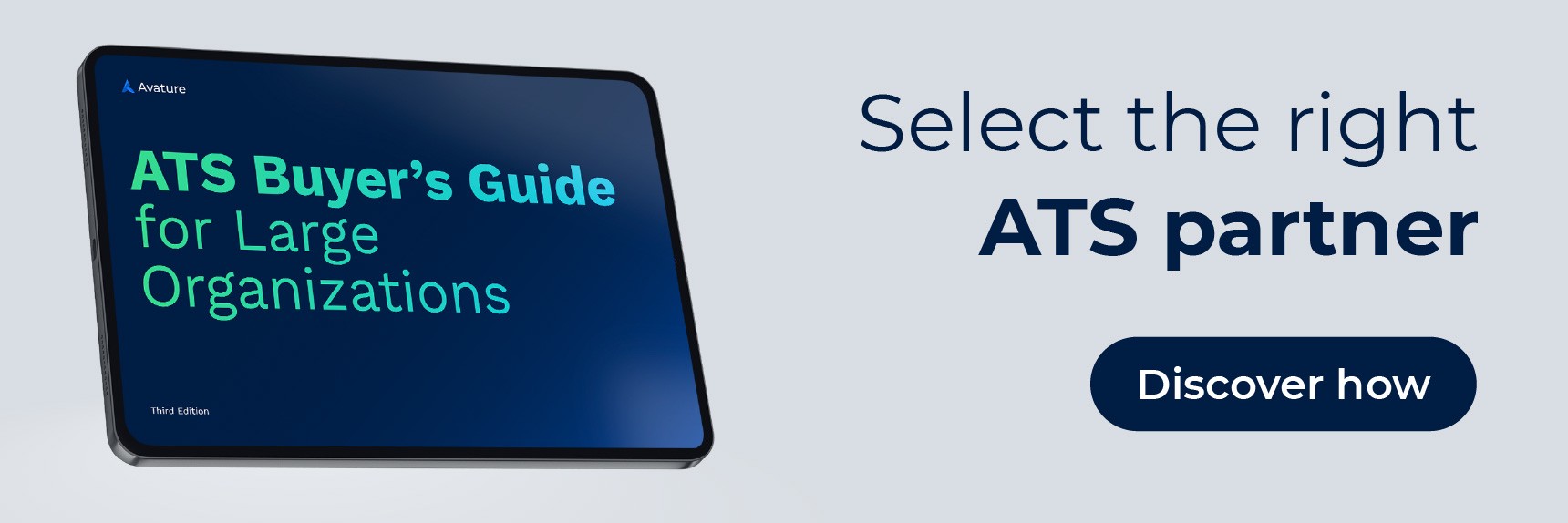If you’re looking for solutions to help you recruit and manage candidate applications, you’ve probably seen the term Applicant Tracking System (ATS) thrown around a lot. But what does it mean exactly? And why do most companies have one?
The Definition of an ATS
An applicant tracking system is a piece of software that helps organizations with their recruiting operations. They provide a solution from which you can administer all job openings and their corresponding applications. Including storing and parsing candidate information from resumes to help recruiters compare and identify top candidates.
Applicants Tracking Systems have grown significantly over the last three decades. Career Site Optimization (CSO), screening automation, interview scheduling, branded emails and branded career sites, SMS capabilities, references and background check automation, Artificial Intelligence (AI) and tools to improve collaboration are just some of the features offered by contemporary state-of-the-art Applicant Tracking Systems.
If you want an in-depth look at the current state of the market, our ATS Buyer’s Guide is an excellent place to start.
Why Do Companies, Especially Enterprise-Level Organizations, Use an ATS?
Enterprise-level organizations face many challenges that require technology and automation to solve. For example, 52 percent of job seekers consider that the most frustrating part of looking for a job is the lack of response from employers. So a typical challenge faced by businesses is dealing with a high-volume of candidates while still providing a top-notch candidate experience.
Consider that many companies are getting over a million applications a year, recruiters can’t possibly attend to each one of them individually.
On top of that, 52 percent of talent acquisition leaders say the hardest part of recruitment is screening candidates from a large applicant pool, and because around 75 percent of applicants are unqualified, recruiters spend a long time screening unfit candidates. How long? 24 hours per hire on average.
So with automated screenings, pre-populated emails and job workflows working in tandem enterprises go from replying to a fraction of applications to responding to all of them. At the same time, the same principles free their recruiters to concentrate on qualified candidates. Hence solving two monumental challenges faced by organizations at once: Maximizing the efficiency of their recruiting teams while radically improving their candidate experience as well.
In fact, automation along these lines improves the experience of every stakeholder involved in the recruiting process.
Another common challenge faced by enterprises is ensuring that they comply with privacy regulations, as well as with laws concerning diversity and hiring bias. Without a centralized database that facilitates extensive analytics, companies can’t meaningfully report on their own hiring practices, set goals or track their success. Data processing automation is also necessary to protect the privacy of candidates. Simply put, sharing emails with resumes attached is risky and a big no-no in many legislations around the world. Not to mention it’s just inefficient in comparison to sharing data with the appropriate stakeholders automatically using an Applicant Tracking System.
I Also Keep Hearing About CRM, What’s the Difference?
A recruitment CRM (Candidate Relationship Management) is a piece of software that is primarily built for sourcing. Similar to its customer homonym, CRMs are designed to nurture long-term relationships through the use of recruitment marketing.
An ATS revolves around all the processes and interactions that happen after a candidate applies to a company, while a CRM is all about engaging with candidates long before they apply. Ultimately, both serve to improve recruiting, staffing and hiring with different complementary approaches. Increasingly, talent acquisition teams are adopting both a CRM and ATS, and are leaning towards solutions that combine the two into a single integrated whole that can keep track and nurture candidates from first contact at a campus event to their eventual onboarding at the company.
If you want to learn more about Applicant Tracking Systems, check out our ATS Buyer’s Guide or, better yet, book a demo and get a taste of what an ATS can do for your organization.



